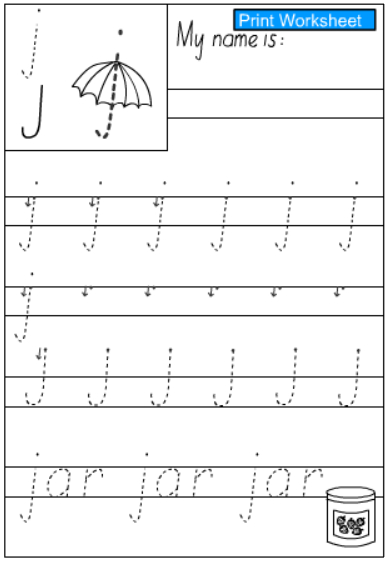Letter j J -Handwriting Practice Sheet (letter j J)
- Grade: Grade 1
Activity type: Printable
To save results or sets tasks for your students you need to be logged in. Join Now, Free
Letter j J -Handwriting Practice Sheet (letter j J)
- Course
English - Grade
Grade 1 - Section
Handwriting Worksheets - Outcome
Grade 1 - Activity Type
Printable - Activity ID
4708

